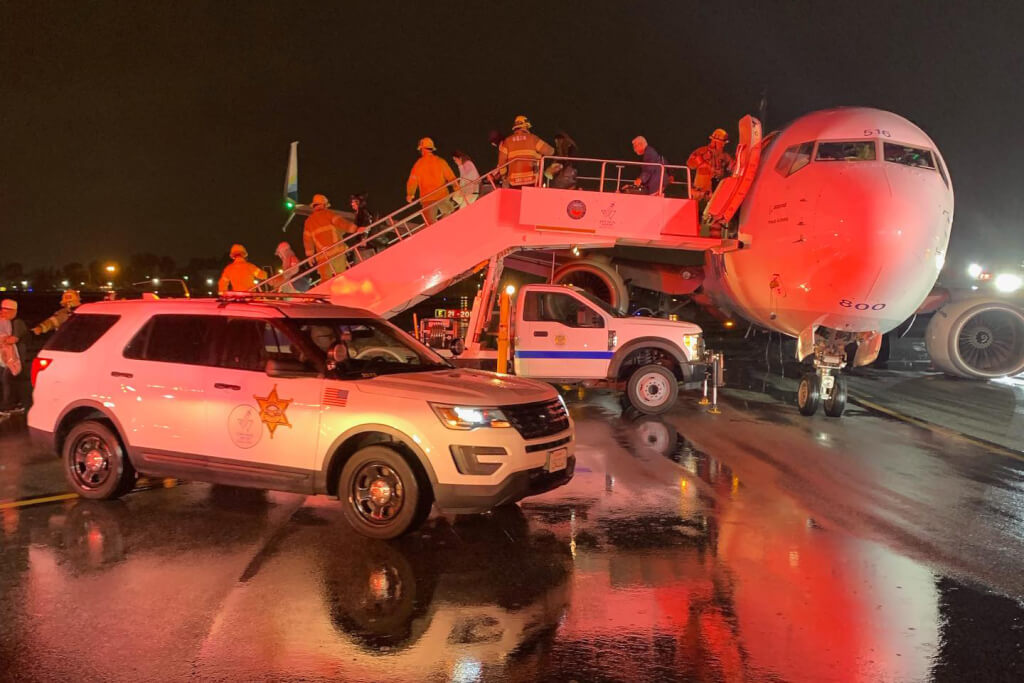Recently, There have been a few flight emergencies with people recording as they happen. While they can be frightening in the moment, the best thing you can do is to try not to panic during emergencies. Panicking will only make things worse for you and the others around you.
Emergencies can be frightening, especially if you aren’t familiar with what’s going on in the situation you’re in. But to remain safe, it’s essential to be able to focus, listen, follow instructions, and think clearly. These are things that are harder to do if you’re panicking. And if you’re panicking, it can actually compound and cause others to do so – especially if you’re being very vocal about it. That’s why I think it’s important to try not to panic during emergencies.
Try Not to Panic During Emergencies
To highlight why and the reason why I’m writing this post, I want to refer to recent examples.
AS1288
The first example highlighting why you should try not to panic during emergencies is Alaska Airlines Flight 1288, operating from Seattle, Washington, to Santa Ana, California. For those that are familiar, John Wayne Airport (SNA) is notorious for its difficult conditions, even in optimal weather. The airport’s short runways and dense neighborhoods make arrivals and departures tricky. But on August 20, 2023, AS1288 came in for a landing as Tropical Storm Hillary made its way over California. That caused heavy rains and windy conditions, including wind shear.
As pilots of AS1288 struggled to get the aircraft – N516AS, a 15-year-old Boeing 737-800 – onto the ground. When they finally did, the plane slammed onto the tarmac with such force that the port main landing gear punctured and came up through the port wing. When this happened, N516AS’s port, nacelle made contact with the runway, sending sparks flying.
While this is happening, someone sitting near the wing is recording the landing.
The person doing the recording, or at least someone near the recorder, sounds like they’re freaking out, especially because of the sparks. Yes, it’s a scary situation, but there’s no smoke, no fire, and you’re on the ground. Shouting about what’s going on outside, about a problem the pilots are likely aware of in some way, is only serving to cause others to become frightened, perhaps more than they already may have been. And for what? You’re causing more damage than good doing this.
Indeed, things looked far worse than they actually were. In fact, no none of the 106 passengers or six crew members were hurt during the ordeal. Everyone was able to safely exit the aircraft via airstairs that were driven out to the runway. No emergency evacuation was needed whatsoever.
WN 307
The next incident that highlights why you should try not to panic during emergencies is Southwest Airlines flight 307 operating from Houston Hobby to Cancun earlier in August. On that flight, I can see why passengers would’ve panicked more. Shortly after takeoff, flames erupted out of the Boeing 737-700’s CFM56, causing the crew to turn around and head back to the airport. The aircraft safely landed 27 minutes after departure with no injuries.
Like the first incident, people looking out the window panicked and began shouting about the flames. Naturally, this caused others to panic, which isn’t good, especially when there wasn’t much reason to panic at all.
While we don’t have any official word on what happened here, this incident looks like a compressor stall. While this type of incident is fairly rare nowadays, it’s something pilots train for regularly. In this case, it likely meant cutting power to the affected engine, which isn’t much of an issue once you’re already in the air. Then, pilots need to compensate for the loss of engine power (which will cause the jet to yaw one way) and head back to the airport.
To highlight how benign this incident actually was, Southwest was able to get passengers of the affected plane onto a new one and got them to Cancun just 2.5 hours after their scheduled arrival time.
Final Thoughts
Again, I realize that it’s difficult, but I hope this post helps to highlight why it’s important to try not to panic during emergencies. Again, panicking isn’t going to do anything constructive and may actually endanger yourself and others onboard your flight – especially if something is truly very wrong.
Me, personally? I’ve never been in an adverse situation like this. Usually, my flights get canceled before something does go wrong. But I’d like to think that I’d be able to remain relatively calm in the above situations.

